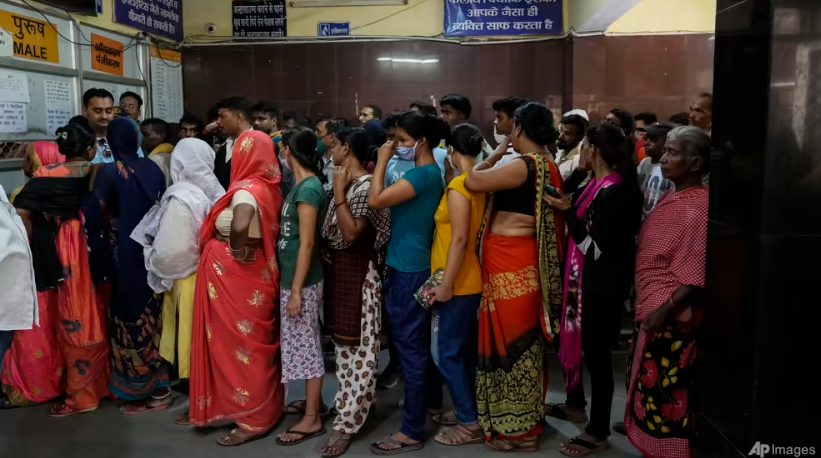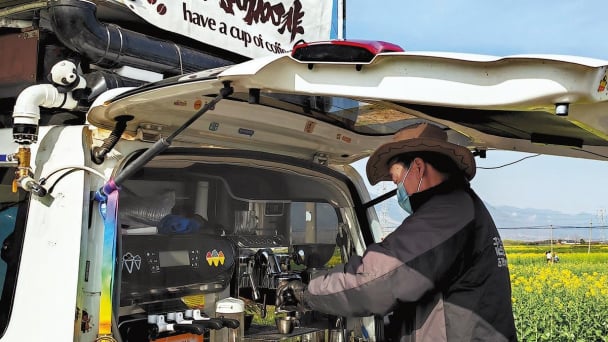May 21, 2025 | 03:05 GMT +7
May 21, 2025 | 03:05 GMT +7
Hotline: 0913.378.918
May 21, 2025 | 03:05 GMT +7
Hotline: 0913.378.918

People crowd the registration counter at Tej Bahadur Sapru Hospital in Prayagraj, Uttar Pradesh state, India on Jun 23, 2022. Photo: AP/Rajesh Kumar Singh
At least 34 people have died in the past two days as a large swath of the north Indian state Uttar Pradesh swelters under severe heat, officials said on Saturday (Jun 17), prompting doctors to advise citizens over 60 to stay indoors during the daytime.
The dead were all over 60 and had pre-existing health conditions that may have been exacerbated by the intense heat. The fatalities occurred in Ballia district, about 200km southeast of Lucknow, the state capital of Uttar Pradesh.
Twenty-three deaths were reported on Thursday and another 11 died on Friday, Ballia’s Chief Medical Officer Jayant Kumar said.
“All the individuals were suffering from some ailments and their conditions worsened due to the extreme heat,” Kumar told The Associated Press on Saturday. He said most of the deaths were because of heart attack, brain stroke and diarrhoea.
Diwakar Singh, another medical officer, said these people were admitted to Ballia’s main hospital in critical condition. “Elderly people are vulnerable to extreme heat too,” he said.
India Meteorological Department data shows Ballia reported a maximum temperature of 42.2 degrees Celsius on Friday, which is 4.7 degrees Celsius above normal.
The scorching summer has sparked power outages across the state, leaving people with no running water, fans, or air conditioners. Many have staged protests.
Uttar Pradesh Chief Minister Yogi Adityanath assured the public that the government was taking all necessary measures to ensure an uninterrupted power supply in the state. He urged citizens to cooperate with the government and use electricity judiciously.
“Every village and every city should receive adequate power supply during this scorching heat. If any faults occur, they should be promptly addressed,” he said on Friday night in a statement.
The main summer months — April, May and June — are generally hot in most parts of India before monsoon rains bring cooler temperatures. But temperatures have become more intense in the past decade. During heat waves, the country usually also suffers severe water shortages, with tens of millions of its 1.4 billion people lacking running water.
A study by World Weather Attribution, an academic group that examines the source of extreme heat, found that a searing heat wave in April that struck parts of South Asia was made at least 30 times more likely by climate change.
In April, the heat caused 13 people to die at a government event in India’s financial capital of Mumbai and prompted some states to close all schools for a week.
(AP)

(VAN) Attempts to bring down the price of the Japanese staple have had little effect amid a cost-of-living crisis.

(VAN) Fourth most important food crop in peril as Latin America and Caribbean suffer from slow-onset climate disaster.

(VAN) Shifting market dynamics and the noise around new legislation has propelled Trouw Nutrition’s research around early life nutrition in poultry. Today, it continues to be a key area of research.

(VAN) India is concerned about its food security and the livelihoods of its farmers if more US food imports are allowed.

(VAN) FAO's Director-General emphasises the need to work together to transform agrifood systems.

(VAN) Europe is facing its worst outbreak of foot-and-mouth since the start of the century.

(VAN) The central authorities, in early April, released a 10-year plan for rural vitalization.